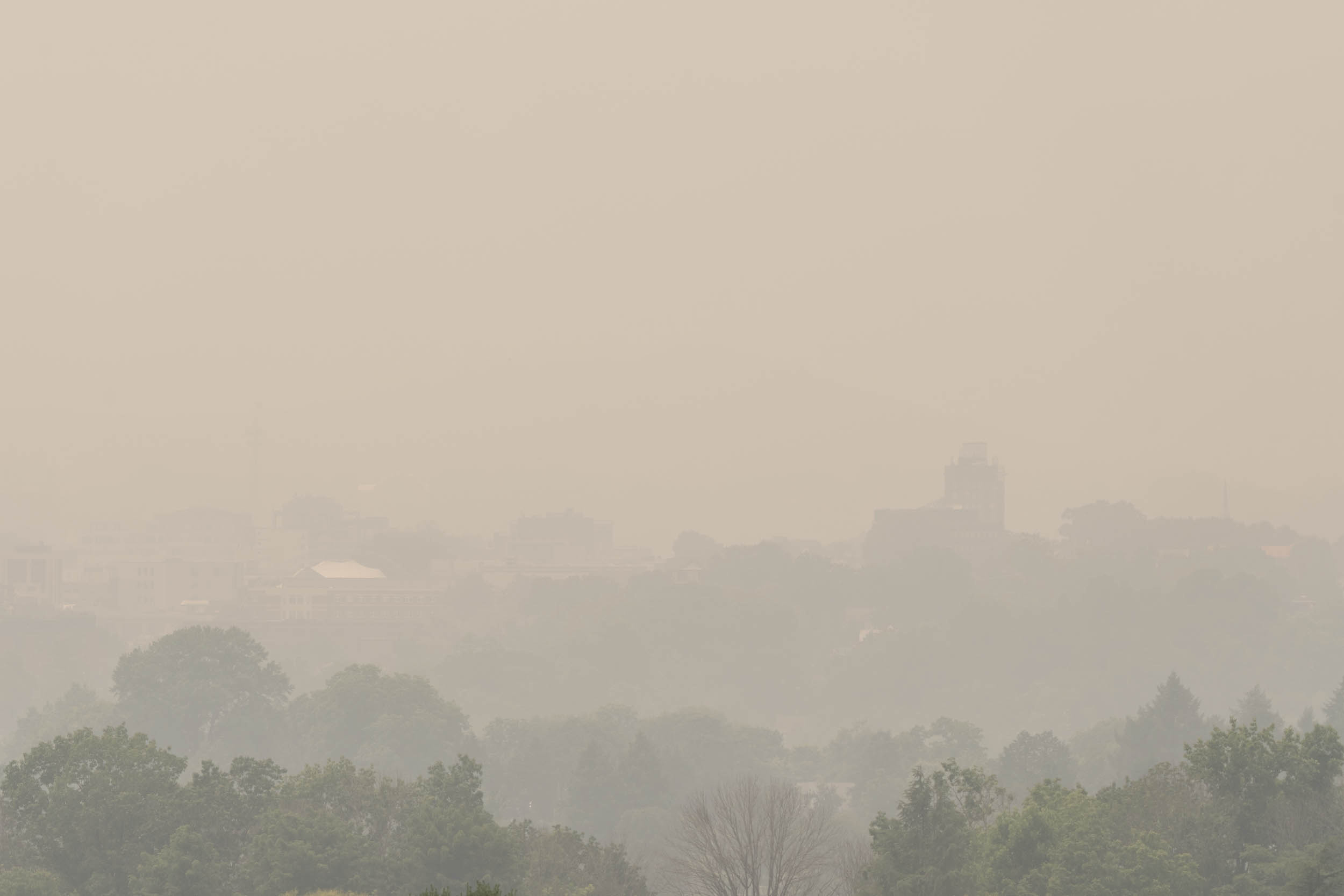For people with chronic conditions, an AQI of more than 100 increases the risk for health problems. Poor air quality adds additional strain to the body, and for those with chronic conditions, this strain can push someone from well to unwell.
Q. For people who do not have breathing or lung issues, is the smoke something that needs to be taken seriously?
A. Yes, we know that poor air quality increases hospitalizations and health care visits.
Q. According to the National Weather Service, the smoke has decreased visibility in some areas of the state to a mile or less, which means there’s a lot of smoke to breathe. What sort of things are in the smoke that could affect our immediate health?
A. The major component to both the poor visibility and health problems associated with wildfires is fine particulate matter, measured as PM 2.5. This is particles with aerodynamic diameters smaller than 2.5 micrometers. Because of their size, these particles deposit deep into the lung and lead to damage at the alveolar level, that is, the level where oxygen enters the blood and carbon dioxide leaves the lung.
Q. The wildfires have created conditions that have gone from what the National Oceanic and Atmospheric Administration ranked as “moderate” to “unhealthy” in just a few days. Officials say those conditions could linger for several more days as fires continue to burn. Are there possible long-term health impacts from the smoke?
A. Long-term exposure to high levels of PM 2.5 can impact human health, but more on the time scale of months to years of exposure, not days to weeks. That said, short-term exposure to poor air quality increases the risk of heart attacks, hospitalizations from respiratory illness, and strokes – and the personal impact of any of these can have lasting effects.
Q. What steps can people take to protect themselves from the adverse effects of the smoke?
A. First, we must recognize that it is hard to know when air quality will improve. The wildfires in Canada are ongoing and, as such, could impact our air quality for days and weeks to come; however, many things influence air quality, not just the production of particulate matter. This includes temperature, wind, and other atmospheric conditions.
Q. How about all those masks everyone already has from the pandemic?
A. Masks, like those we have all been using recently to protect ourselves from COVID, will help in this setting as well. The best masks remain N95 masks, as they will provide the greatest level of protection; however, surgical masks also help.











